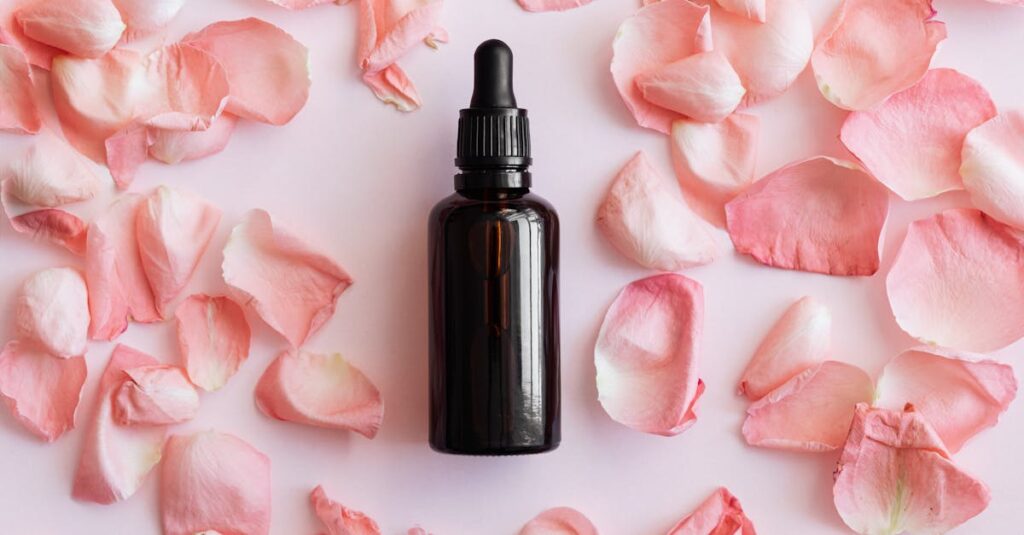The world’s growing waste problem has sparked urgent conversations about sustainability across industries, with businesses striving to reduce their environmental footprint. A powerful solution to this crisis is the concept of a circular economy, which presents an alternative to the traditional “take-make-dispose” model. A circular economy promotes sustainability by encouraging companies to design products that can be reused, repaired, refurbished, and recycled, creating a closed-loop system that minimizes waste.
This model has the potential to revolutionize industries like beauty and fashion, where resource consumption and waste generation are traditionally high. By embracing zero waste initiatives, beauty and fashion brands can play a pivotal role in protecting the planet, reducing waste, and fostering a sustainable future. In this blog, we’ll explore how a circular economy can be applied to these industries and what steps brands can take to build a zero-waste business model.
What is a Circular Economy?
A circular economy is an economic system aimed at eliminating waste and the continual use of resources. Unlike the traditional linear model, which follows a one-way path from raw material extraction to disposal, the circular economy encourages the reuse, repair, and recycling of products and materials. The goal is to create a closed-loop system where products are designed to be used for as long as possible, and then recycled or repurposed at the end of their life cycle.
In a circular economy, there are several core principles:
- Design for longevity: Products should be designed for durability, repairability, and ease of recycling.
- Use renewable resources: Materials used in products should be renewable, biodegradable, or recyclable.
- Minimize waste: The aim is to reduce waste by reusing materials, recycling, and creating products that can be easily disassembled.
- Close the loop: Products, once they have reached the end of their useful life, should be recycled into new products to reduce the need for virgin resources.
How Circular Economy Applies to the Beauty and Fashion Industries
The beauty and fashion industries are notorious for their significant environmental impact, especially due to the large quantities of waste produced. According to reports, the global beauty industry generates around 120 billion units of packaging each year, while the fashion industry contributes to 92 million tons of textile waste annually. Adopting circular economy principles can help both industries reduce their reliance on raw materials, minimize waste, and ensure that products have a longer lifespan.
- Beauty Industry: In the beauty sector, products like skincare creams, shampoos, and perfumes often come in single-use plastic packaging, and ingredients are frequently sourced from unsustainable sources. Adopting circular economy practices in beauty involves reducing packaging waste, using recyclable or biodegradable materials, and creating refillable or reusable containers.
- Fashion Industry: The fashion industry faces similar challenges, with an overwhelming amount of textile waste being generated. Fast fashion has encouraged the production of low-cost clothing made from non-biodegradable materials, contributing to environmental degradation. In a circular economy, fashion brands can adopt sustainable production practices, recycle materials, and design clothing with the intention of longevity, rather than encouraging a cycle of constant consumption.
Initiatives for Embracing Zero Waste in Beauty and Fashion
Both beauty and fashion brands can take actionable steps to embrace a zero-waste, circular economy model. Below are some practical initiatives that brands can implement to make a significant environmental impact.
1. Refillable and Reusable Packaging
One of the easiest ways beauty and fashion brands can contribute to a circular economy is by offering refillable and reusable packaging options. Instead of single-use containers, brands can design their products with long-lasting packaging that can be reused or refilled multiple times.
- Beauty: Brands like Lush have set the standard for refillable and packaging-free products. Their shampoo bars, body lotions, and cleansers often come with minimal or no packaging. Additionally, Fenty Beauty offers refillable compacts and lipsticks, allowing consumers to purchase refills instead of discarding the entire container.
- Fashion: In the fashion world, brands like Patagonia and Levi’s have embraced sustainable practices, offering repair services or designing durable, long-lasting clothing. These initiatives reduce the need for new products and minimize the consumption of resources.
2. Recycling and Upcycling Initiatives
Recycling and upcycling play a crucial role in a circular economy, enabling brands to reuse materials rather than dispose of them. For beauty brands, this can mean incorporating recycled materials into packaging, such as using post-consumer recycled plastic or glass. For fashion, it involves repurposing old clothes, textiles, and fabric scraps to create new products.
- Beauty: Brands like Aveda have set up closed-loop recycling systems for their bottles, offering incentives for customers who return their empty packaging. By using 100% recycled plastic in their packaging, Aveda reduces the demand for virgin plastic and prevents waste from ending up in landfills.
- Fashion: H&M’s Conscious Collection uses recycled fabrics like polyester, cotton, and wool. Additionally, brands like Re/Done specialize in upcycling vintage denim into modern, stylish pieces. Such initiatives reduce the need for virgin materials and promote the use of what already exists, reducing waste in the process.
3. Design for Longevity and Durability
Designing products that are built to last rather than encouraging a “buy and discard” mentality is essential in promoting sustainability. Beauty and fashion brands should focus on creating high-quality products that withstand the test of time and avoid short-lived trends that end up in landfills.
- Beauty: For beauty products, this could mean focusing on skincare products with natural, long-lasting ingredients or designing makeup formulations that are refillable and high-quality, so they don’t need to be replaced frequently.
- Fashion: The fashion industry has already seen a rise in slow fashion, with brands like Everlane and Stella McCartney designing timeless, durable clothing that consumers can wear year after year. By focusing on high-quality materials and craftsmanship, these brands create pieces that are more resistant to wear and tear, thus contributing to a circular system of consumption.
4. Take-Back and Product Return Programs
Take-back and product return programs encourage consumers to send back used products for recycling, repurposing, or upcycling. This initiative ensures that items don’t end up in landfills, but instead can be reused in the production of new products.
- Beauty: Some brands, such as L’Occitane, offer recycling programs where customers can return their empty beauty containers for proper recycling. The brand even uses these returned containers to create new packaging, promoting a closed-loop recycling system.
- Fashion: Brands like Patagonia and The North Face have take-back programs where customers can return worn-out garments for recycling or repair. Patagonia also encourages customers to buy secondhand items through their Worn Wear program, reducing waste and encouraging reuse.
5. Educating Consumers and Promoting Transparency
Brands should also prioritize consumer education and transparency about their sustainable practices. Educating consumers on the benefits of the circular economy, how to recycle or reuse products, and the importance of choosing sustainable options can drive long-term change.
- Beauty: Brands can share tips on how to reduce waste in beauty routines, such as encouraging customers to use less product or opt for sustainable alternatives.
- Fashion: By promoting sustainable fashion practices, such as choosing quality over quantity and caring for garments properly, brands can help consumers make more responsible purchasing decisions.
Conclusion: The Future of Circular Economy in Beauty and Fashion
Building a circular economy in the beauty and fashion industries is not just a trend—it’s a necessary shift to reduce waste, protect the environment, and create a more sustainable future. By embracing zero-waste initiatives such as refillable packaging, recycling, upcycling, and designing for durability, beauty and fashion brands can help close the loop on resource consumption.
As consumers become more environmentally conscious, the demand for sustainable products will continue to grow. Brands that adopt circular economy practices and demonstrate a commitment to sustainability will not only contribute positively to the planet but also build strong, loyal customer bases. The future of beauty and fashion lies in sustainability—by embracing the circular economy, these industries can lead the charge toward a zero-waste world.

